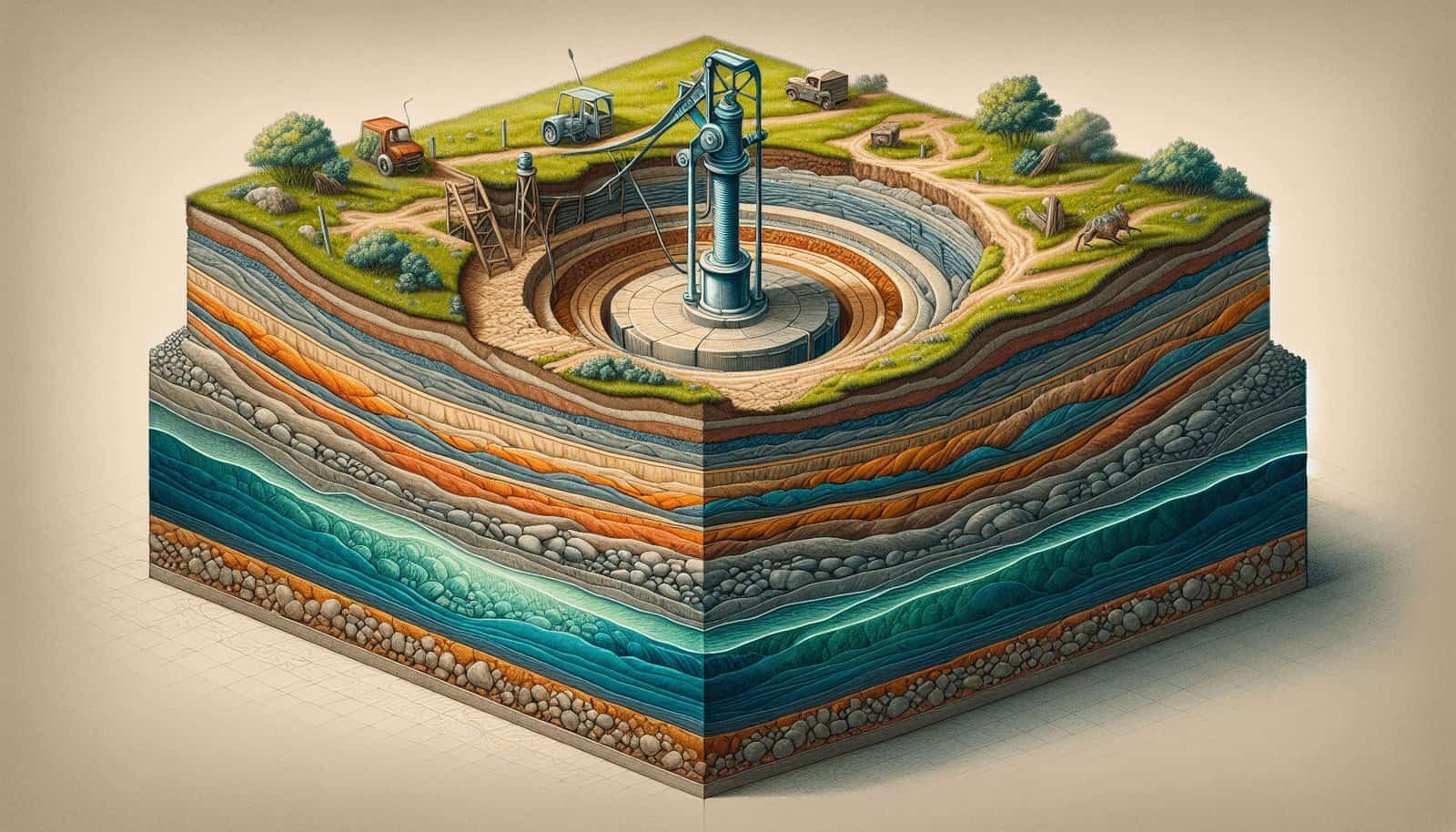Do you draw your water from a private well system, or are you considering installing one? Understanding how a private well system works can open the door to a deeper appreciation of this vital source of household water. Many people rely on these systems in rural areas or in places where municipal water services are unavailable or unreliable. Nevertheless, the mechanics of a private well system remain a mystery to many. Let’s change that by breaking down how these intricate systems function, ensuring you’re well-equipped with knowledge whether you’re considering one or just curious.
What is a Private Well System?
A private well system is an independent water supply infrastructure that provides water to a property. Unlike municipal water systems that supply water to many homes from a single source, a private well draws water from an underground aquifer—essentially, a naturally occurring storage tank of water beneath the earth’s surface. Having your water source means you must also take on the responsibility of maintaining it, ensuring clean and safe water for your household.
Understanding Aquifers
The water in a private well system typically comes from an aquifer, which is essentially a layer or zone of rock beneath the earth’s surface containing water. The water lies within the pore spaces of the soil or rock, slowly replenished by precipitation. Factors like soil type, rock permeability, and geographic location determine how much water an aquifer can hold.
Why Choose a Private Well System?
While some may view having a private well as a necessity rather than a choice, it comes with several benefits. First, private wells are often more cost-effective over time compared to municipal water supply services. No monthly water bill, just an upfront cost for drilling and occasional maintenance expenses. Additionally, well water often boasts a natural taste due to its mineral composition, and you have greater control over water quality, testing, and any treatment applied.
Components of a Private Well System
To fully comprehend how a private well system functions, it’s crucial to understand its core components. Each part plays a significant role in delivering clean water to your home:
The Well Itself
The first component is the well, which is drilled into the ground to reach the aquifer. Depending on water depth and geological conditions, different drilling techniques may be used. Wells can be shallow (less than 50 feet deep) or deep (over 100 feet), with deep wells being more common for reaching stable and reliable aquifers.
The Well Casing
A well casing is usually a pipe installed within the drilled hole to maintain the well opening’s structure and prevent contaminants from entering the water. Made from steel or heavy-duty plastic, casing ensures that soil and debris can’t collapse into the aquifer or mix with the clean water supply.
The Well Cap
Sitting atop the well casing is the well cap, designed to keep debris, insects, and small animals away from the well. It is a crucial feature to prevent external contamination and ensure the safety of the water source.
The Pump
Perhaps the most essential component, the pump, moves water from the aquifer up through the well and into your home. There are two primary types of pumps: submersible pumps (typically used in deeper wells) and jet pumps (commonly used in shallower settings). Choosing the right type of pump and regular maintenance ensures a consistent and reliable water supply.
Pressure Tank
Once water is extracted from the well, the pressure tank stores and regulates it for household use. The pressure tank ensures the system delivers a steady and consistent pressure to all your taps. Without a pressure tank, your pump would need to operate continuously, significantly reducing its lifespan.

How Does Water Get to Your Faucet?
Understanding the journey from aquifer to faucet can be fascinating! Here’s a step-by-step look at how water travels through your private well system:
Drilling: The journey begins with drilling a well down through layers of soil and rock to reach the aquifer.
Pump Activation: When you open a tap, the water pressure drops, signaling the pump to activate and draw water from the aquifer.
Water Lifting: Depending on the depth, a submersible or jet pump will raise the water to the surface.
Pressure Tank Storage: The water passes into the pressure tank which maintains adequate pressure before distribution.
Distribution: Finally, water flows through your plumbing system, ensuring it reaches your faucets or appliances.
Ensuring Clean and Safe Water
A significant aspect of managing a private well system is ensuring clean and safe water. This requires regular testing, treatment, and maintenance.
Testing Your Well Water
Unlike municipal systems, where water is treated and regularly checked, well owners need to test their water to ensure it’s free from contaminants like bacteria, nitrates, and heavy metals. Testing should be done at least once a year, though certain circumstances, like nearby construction or flooding, may necessitate more frequent tests.
Water Treatment Options
Depending on your water’s initial quality, you may need to install treatment systems. Common methods include water softeners, filters, ultra-violet systems, and reverse osmosis systems. These help remove various impurities, from hardness-causing minerals to bacteria and other pollutants.
Maintenance of the Well System
Regular well system maintenance is crucial for continued safe, clean water. The key tasks include:
- Annual inspections: A professional should check the integrity of your well and system.
- Pump service: Over time, sediments may accumulate in the pump, requiring cleaning or repairs.
- Pressure tank checks: Ensuring the tank maintains correct pressure is vital.
- Sanitization: Periodically sanitize the well to eliminate any potential bacterial contaminants.

Troubleshooting Common Issues
Like all systems, private wells can experience problems. Here are some common issues and their potential remedies:
Low Water Pressure
Caused by a failed pump, pressure tank malfunction, or clogged pipes, low water pressure can be frustrating. First, check the pressure tank; if it’s functioning properly, consult a professional to examine the pump or check for pipe clogs.
Cloudy or Discolored Water
Cloudiness or discoloration can be the result of sediment in the water, often needing a sediment filter or, in some cases, addressing a source of contamination. Testing the water will guide the appropriate treatment measures.
Odd Tastes or Odors
Unpleasant flavors or smells typically indicate contamination, often from bacteria or high levels of minerals or chemicals. Conduct a water test to identify the issue, allowing you to choose an effective treatment.
Benefits and Considerations of Having a Private Well System
Understanding both the benefits and challenges of a private well system allows you to make an informed decision about your water supply.
Benefits
Having a private well system offers advantages such as independence from municipal water supply, long-term cost savings, and access to naturally flavored water. The control over your water quality is also empowering, enabling you to address contamination with treatments perfectly suited to your specific needs.
Considerations
However, well ownership requires ongoing responsibility. Regular maintenance and testing are essential, and initial setup costs can be high.During drought conditions, water availability may become an issue, prompting consideration of water conservation or alternative solutions.

Regulations and Legal Considerations
In many regions, laws and regulations govern private well systems. Compliance with local regulations includes adhering to building codes, acquiring necessary permits, and following guidelines for well construction and water quality, ensuring not only a legal setup but a safe one.
State and Local Regulations
Research your state’s specific regulations regarding drilling and maintaining a well. Some areas might require permits, annual inspections, or documentation of water testing to ensure the well complies with health and safety standards.
Concluding Thoughts
Possessing your water supply through a private well system is both a privilege and a responsibility. Understanding how the system works, committing to regular maintenance, and taking proactive steps toward ensuring water quality is fundamental. Armed with this knowledge, you can reap the benefits of a private well, securing a dependable water supply for years to come.

